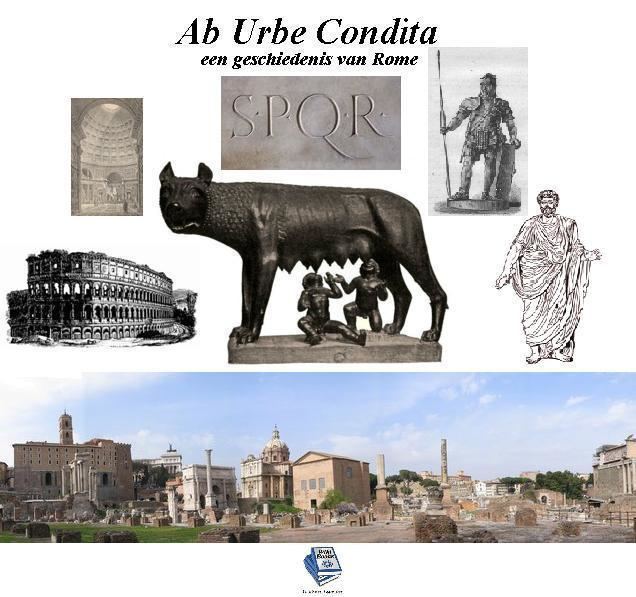 | ||
Ab urbe condita platinum demonstration
"Ab urbe condita" (Classical orthography: ABVRBECONDITÁ; [ab ˈʊrbɛ ˈkɔndɪtaː]; related to "anno urbis conditae"; A. U. C., AUC, a.u.c.; also "anno urbis", short a.u.) is a Latin phrase meaning "from the founding of the City (Rome)", traditionally dated to 753 BC. AUC is a year-numbering system used by some ancient Roman historians to identify particular Roman years. Renaissance editors sometimes added AUC to Roman manuscripts they published, giving the false impression that the Romans usually numbered their years using the AUC system. The dominant method of identifying Roman years in Roman times was to name the two consuls who held office that year. The regnal year of the emperor was also used to identify years, especially in the Byzantine Empire after 537 when Justinian required its use.
Contents
- Ab urbe condita platinum demonstration
- Rome total war ab urbe condita auc mod as the sabaeans campaign part 1
- Significance
- Relationship with Anno Domini
- References
Rome total war ab urbe condita auc mod as the sabaeans campaign part 1
Significance
The traditional date for the founding of Rome of 21 April 753 BC, was initiated by 1st century BC scholar Marcus Terentius Varro. Varro may have used the consular list with its mistakes, and called the year of the first consuls "245 ab urbe condita", accepting the 244-year interval from Dionysius of Halicarnassus for the kings after the foundation of Rome. The correctness of Varro's calculation has not been confirmed but it is still used worldwide.
From Emperor Claudius (reigned 41–54 AD) onwards, Varro's calculation superseded other contemporary calculations. Celebrating the anniversary of the city became part of imperial propaganda. Claudius was the first to hold magnificent celebrations in honour of the city's anniversary, in 48 AD, 800 years after the founding of the city. Hadrian and Antoninus Pius held similar celebrations, in 121 AD and 147/148 AD respectively.
During 248 AD, Philip the Arab celebrated Rome's first millennium, together with Ludi saeculares for Rome's alleged tenth saeculum. Coins from his reign commemorate the celebrations. A coin by a contender for the imperial throne, Pacatianus, explicitly states "Year one thousand and first", which is an indication that the citizens of the Empire had a sense of the beginning of a new era, a Saeculum Novum.
When the Roman Empire turned Christian during the following century, this imagery came to be used in a more metaphysical sense, and removed legal impediments to the development and public use of the Anno Domini dating system, which came into general use during the reign of Charlemagne.
Relationship with Anno Domini
The Anno Domini (AD) year numbering was developed by a monk named Dionysius Exiguus in Rome during 525, as a result of his work on calculating the date of Easter. In his Easter table the year 532 AD was equated with the regnal year 248 of Emperor Diocletian. The table counted the years starting from the presumed birth of Christ, rather than the accession of the emperor Diocletian on 20 November 284, or as stated by Dionysius: "sed magis elegimus ab incarnatione Domini nostri Jesu Christi annorum tempora praenotare…" Blackburn and Holford-Strevens review interpretations of Dionysius which place the Incarnation in 2 BC, 1 BC, or 1 AD. It was later calculated (from the historical record of the succession of Roman consuls) that the year 1 AD corresponds to the Roman year 754 AUC, based on Varro's epoch. This however resulted in that year not corresponding with the lifetimes of historical figures reputed to be alive, or otherwise mentioned in connection with the Christian incarnation, e.g. Herod the Great or Quirinius.
1 AUC (ab urbe condita) = 753 BC 750 AUC = 4 BC (Death of Herod the Great) 754 AUC = 1 AD 759 AUC = 6 AD (Quirinius becomes governor of Syria) 1000 AUC = 247 AD 1500 AUC = 747 AD 2000 AUC = 1247 AD 2206 AUC = 1453 AD (Fall of Constantinople) 2245 AUC = 1492 AD 2529 AUC = 1776 AD 2753 AUC = 2000 AD 2770 AUC = 2017 AD